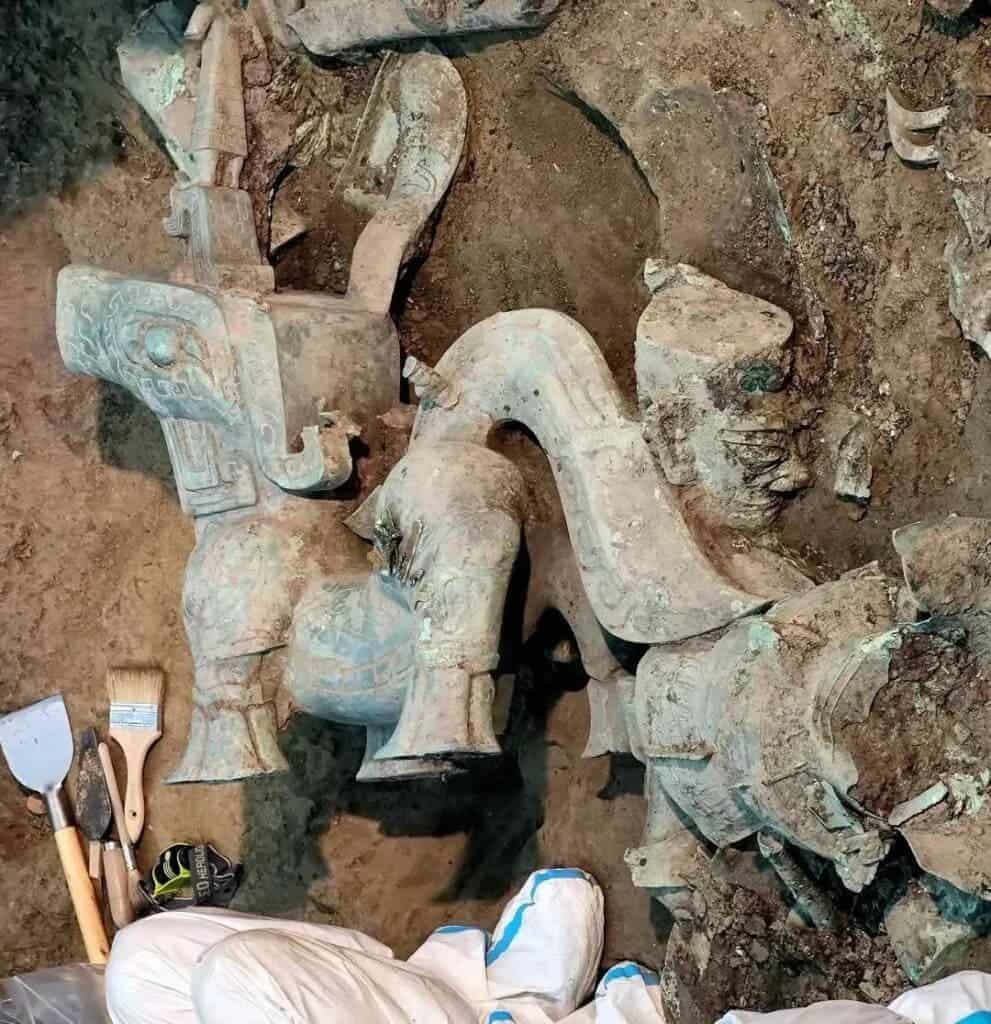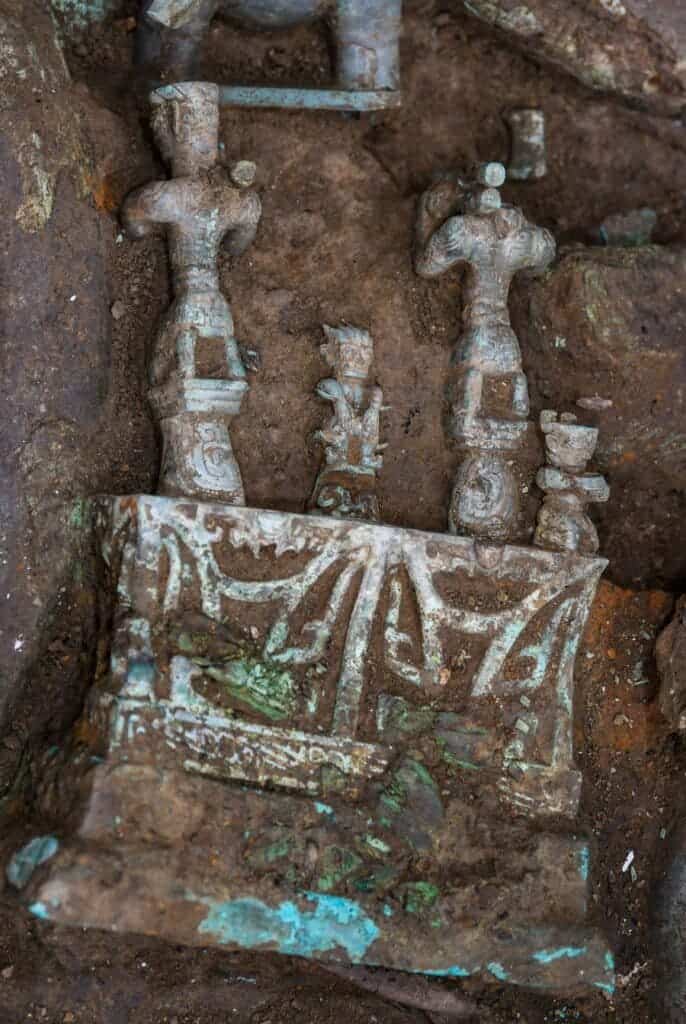Since the early 1980s, scientists have found more than a staggering 14,000 artifacts at the 3,000-year-old archaeological site of Sanxingdui in southwest China. And this site, known for sacrificial pits, is the gift that keeps on giving.

Chinese scientists now report the discovery of a large bronze statue found at Sanxingdui’s Number 8 sacrificial pit, which depicts a strange mythical beast. The creature cast in bronze has a horn on its head, with another smaller bronze statue of a man dressed in a long robe standing on the horn that looks like he’s trying to control the mythical animal. The chest of the beast is engraved with a tree.
“The tree is engraved directly on it and can be seen as Sanxingdui people’s worship of the sacred tree, or has taken the sacred tree as a kind of divine presence,” archaeologist Zhao Hao said CGTN.
Compared to other similar depictions of mythical beats previously found at Sanxingdui, which range in size from only 20 to 30 centimeters in length, the newly unearthed relic is massive. It stands one meter tall and measures one meter in length, making it the largest but also the most complete artifact of its kind ever found at Sanxingdui.

Excavations at Sanxingdui have revealed all kinds of other amazing artifacts, including a bronze altar and a pair of millennia-old gold masks that stunned archeologists last year. Other findings include bronze artifacts with dragon and cow engravings, miniature ivory sculptures, silk, carbonized rice (rice that has turned into carbon), and tree seeds.
“The craftsmanship, form and content of these cultural relics are very complex and rich in archaeological information,” said Xu Feihong, a lecturer at Shanghai University who oversees the excavation of the No.3 pit. “They have defied our previous understanding of bronze wares and posed great challenges to our research.”


The site is around 3,000 years old and is linked to the ancient kingdom of Shu, which governed the area until 316 B.C.E when it was replaced by the Qin state. A local farmer first accidentally stumbled across Sanxingdui in 1929 when he found a pit stacked to the brim with jade artifacts. But it wasn’t until 1986 that serious archaeological work began at the site, which now numbers eight pits.
No human remains have ever been found, which has made the purpose of these mysterious pits challenging to ascertain, especially in light of little to no surviving written records from that time.
“Some believe the pits to be a kind of burial, but without human skeletons; the body might have been reduced to ash as a result of a ritual burning ceremony,” Chen Shen, a senior curator of Chinese art and culture at the Royal Ontario Museum in Toronto, wrote in his book Anyang and Sanxingdui: Unveiling the Mysteries of Ancient Chinese Civilizations.
Archaeological digs at the site showed evidence of a trapezoidal-shaped walled city founded circa 1600 BCE, right on the banks of the Yazi River. The highest portions of the wall were as tall as 10 meters (32 feet) and were surrounded by 25-meter-wide (82 feet) and 3-meter deep (10 feet) canals used for irrigation, inland navigation, flood control, and defense.
More digs are underway at Sanxingdui and archaeologists are confident the site is about to shed more secrets.









